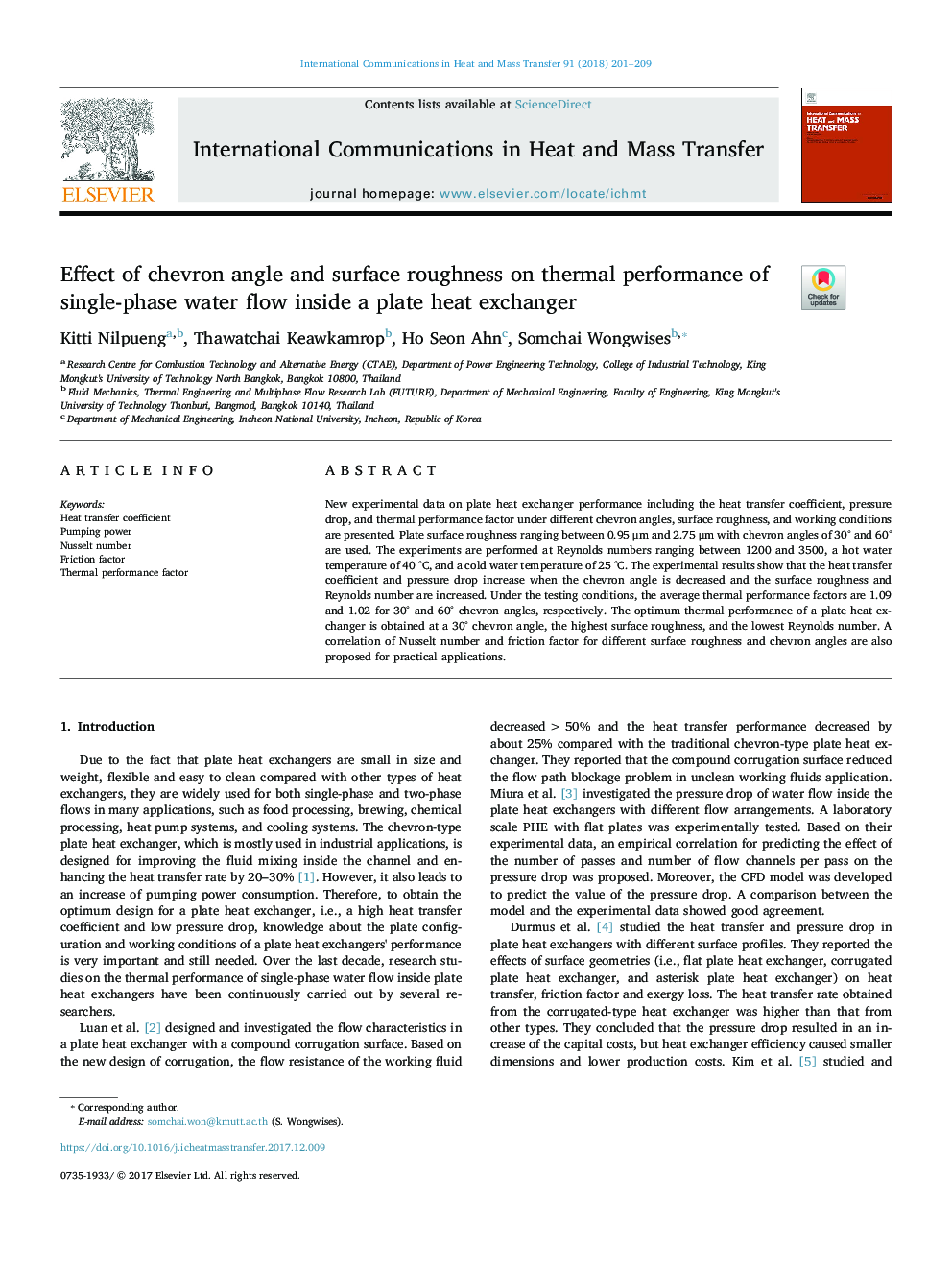| Article ID | Journal | Published Year | Pages | File Type |
|---|---|---|---|---|
| 7053083 | International Communications in Heat and Mass Transfer | 2018 | 9 Pages |
Abstract
New experimental data on plate heat exchanger performance including the heat transfer coefficient, pressure drop, and thermal performance factor under different chevron angles, surface roughness, and working conditions are presented. Plate surface roughness ranging between 0.95 μm and 2.75 μm with chevron angles of 30° and 60° are used. The experiments are performed at Reynolds numbers ranging between 1200 and 3500, a hot water temperature of 40 °C, and a cold water temperature of 25 °C. The experimental results show that the heat transfer coefficient and pressure drop increase when the chevron angle is decreased and the surface roughness and Reynolds number are increased. Under the testing conditions, the average thermal performance factors are 1.09 and 1.02 for 30° and 60° chevron angles, respectively. The optimum thermal performance of a plate heat exchanger is obtained at a 30° chevron angle, the highest surface roughness, and the lowest Reynolds number. A correlation of Nusselt number and friction factor for different surface roughness and chevron angles are also proposed for practical applications.
Keywords
Related Topics
Physical Sciences and Engineering
Chemical Engineering
Fluid Flow and Transfer Processes
Authors
Kitti Nilpueng, Thawatchai Keawkamrop, Ho Seon Ahn, Somchai Wongwises,
